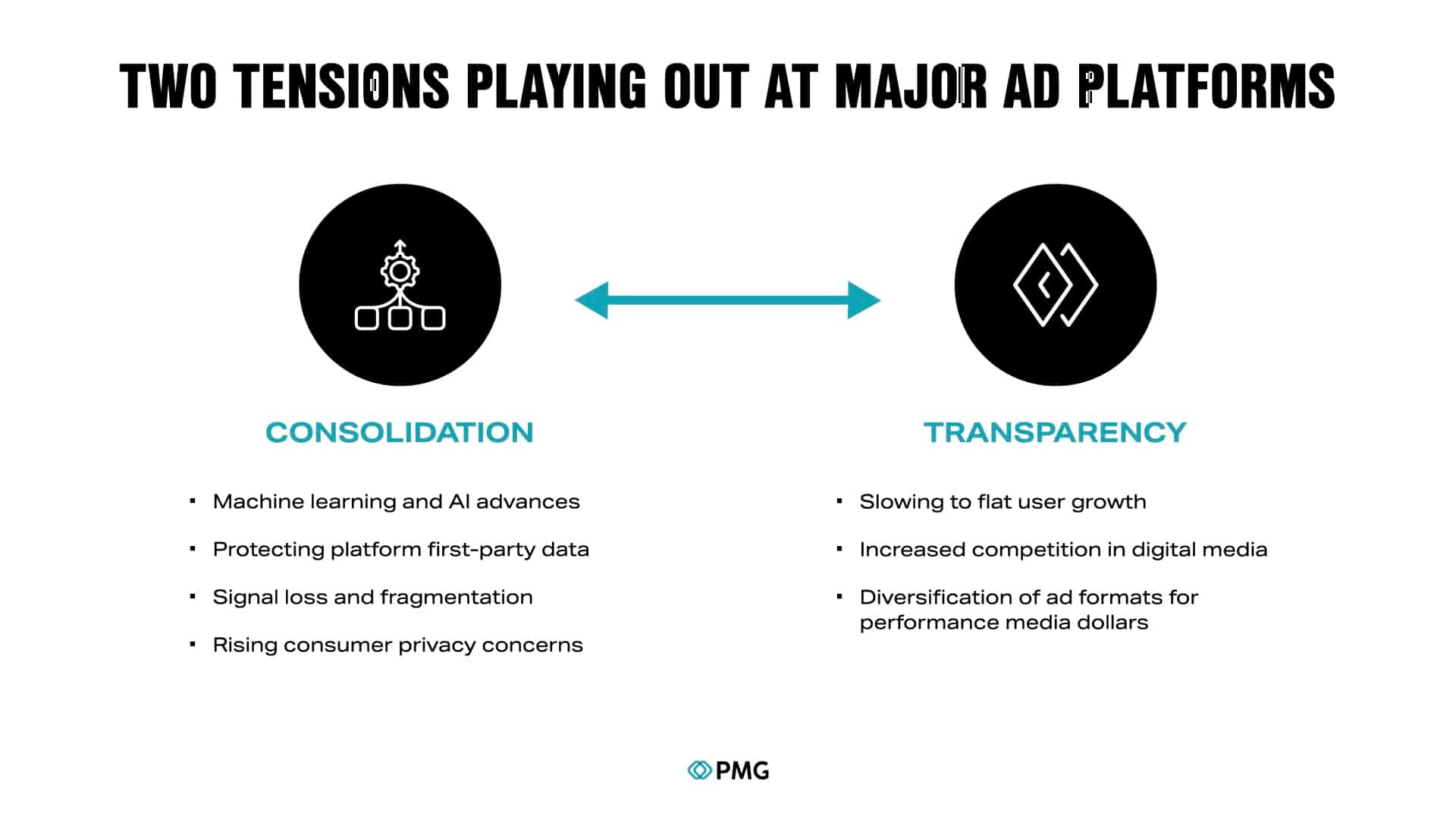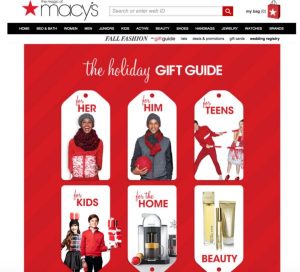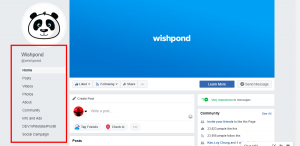The tension between consolidation and transparency is shaping brand strategies, media spend diversification and advanced measurement tactics.

In recent years, tech giants like Meta, Google and Amazon tightened their grip on digital media while facing increased scrutiny from consumers and regulators. Beneath the headlines, a key shift is reshaping how brands interact with ad platforms: the growing tension between consolidation and transparency.
How consolidation and transparency are redefining digital advertising
Consolidation is growing due to several factors. Machine learning and AI improvements let platforms automate ads at a large scale with little input from marketers. At the same time, these platforms are protecting their first-party data as privacy concerns and regulations increase. With stricter limits on third-party data, tech giants are tightening control over ad systems.
This is happening as demands for transparency increase due to several market shifts. Less digital user growth is increasing competition for ad spending. New players like retail media networks and connected TV (CTV) provide more options for brands to spread their budgets. Additionally, brands are fighting harder to get the most from their ad dollars across more channels, including newer platforms. These factors push major ad platforms to prove their value and give advertisers more control.
These opposing forces are reshaping the relationships between advertisers and platforms. Campaign structures like Google’s Performance Max (PMax), Meta’s Advantage+ Shopping, Amazon’s Performance+ and TikTok’s Smart Performance Campaigns promise efficiency through automation and artificial AI. However, the accompanying lack of transparency means brands don’t know how effective these are.

The rise of consolidation: Efficiency at the expense of control
Google’s Performance Max (PMax), launched in late 2021, reflects the consolidation trend. Advertisers have limited control over where ads appear. The AI optimizes based on the advertiser’s goals but hides many controls marketers are used to, like audience targeting or channel choice.
For many brands, this “black box” approach feels restrictive. PMax runs ads across all Google-owned media, including unexpected places like Gmail inboxes, which lack the personal touch marketers prefer. Google has reduced access to auction data, making it harder to see how competitors bid. Despite these issues, PMax is essential for tapping into Google’s vast reach.
Meta followed suit in 2022 with its Advantage+ Shopping Campaigns. Meta overhauled its ad algorithm because of new privacy constraints, particularly from Apple’s mobile changes. Marketers provide inputs like goals, budgets and product feeds and Advantage+ takes over from there. While brands appreciated performance improvements, the lack of transparency mirrored the struggles with Google’s PMax.
Amazon’s Performance+, launched in 2024, is following a similar path. It includes Sponsored Products, Sponsored Brands and Sponsored Display, using shopper data and AI to optimize ad placements with little advertiser input. Amazon tried to differentiate itself by adding the AI-driven upgrades to its DSP and emphasizing it wasn’t changing reporting or attribution.
TikTok, with its Smart Performance Campaigns, also entered this space by automating optimization across its short-form video platform, offering advertisers rapid scale with limited input.
How brands have responded
Many brands are responding to this in one of three ways.
1. Advocating for transparency
Brands have long called for more visibility into campaign drivers and performance metrics. The lack of granular data makes it difficult to analyze what is driving success or failure. Leaving them feeling their investments are being managed by inscrutable algorithms. Direct feedback to platforms is an ongoing effort as brands push for more detailed reporting and greater control.
2. Diversification of media spend
Many brands moved away from relying solely on the “black box” of major ad platforms by diversifying their media spend. The rise of alternatives like streaming video and connected TV (CTV) accelerated this shift, offering broad reach and more measurable results.
As ad budgets expand to include CTV, Amazon’s growth as a major advertising player also provides more options beyond Google and Meta. Growing platforms like retail media and digital out-of-home (DOOH) offer even more opportunities, allowing brands to develop more varied and accountable media strategies.
3. Smarter measurement
With less transparency from ad platforms, brands need to strengthen their measurement capabilities. Sophisticated media mix modeling (MMM), frequent experimentation and incremental testing are critical. Brands must build their own “source of truth” to measure the effectiveness of their media investments independently. This creates a counterbalance to the performance metrics reported by the platforms.
Developing robust measurement capabilities drives accountability, ensuring platforms deliver on the business outcomes they claim to influence.
Green shoots of transparency: Are platforms listening?
Platforms promised better performance because of consolidation — hoping that would outweigh the loss of transparency and control. Many advertisers, especially those with savvy measurement strategies, argue performance just hasn’t materialized. Even when consolidated campaigns do perform, some brands and agency partners don’t feel the tradeoff is worth it for other reasons, including brand safety concerns.
There are encouraging signs platforms are starting to listen. Meta recently announced its intention to integrate “Source of Truth” bidding, kicking off with Google Analytics and attribution provider Northbeam. This may give brands more visibility into how campaigns are being optimized. While these changes are still in their infancy, they suggest consistent feedback from advertisers is beginning to make an impact.
Last month, Google announced new features in Performance Max to allow for campaign-level negative targeting to give brands more control. Amazon’s Performance+ made a point to include ad format toggle controls — seemingly in response to advertisers’ concerns.
The tension between consolidation and transparency remains a defining challenge in digital advertising. To push for greater control and transparency, brands must:
- Apply more data-driven rigor than ever to testing and learning as they diversify their media strategies.
- Invest in robust measurement to hold ad dollars accountable.
- Advocate for the data transparency they need to succeed.
The post How brands are handling the lack of transparency in major ad platforms appeared first on MarTech.
(1)







